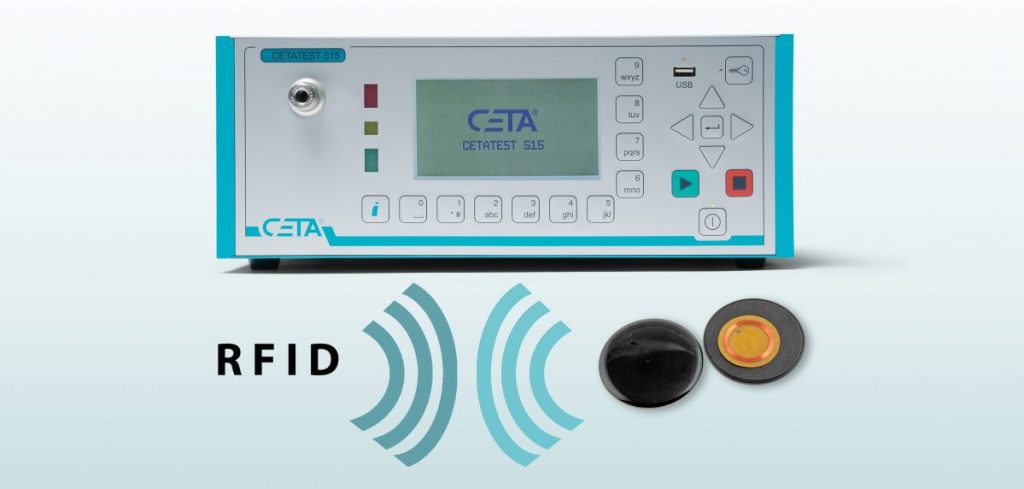RFID (radio frequency identification) technology enables contactless data transmission without having to establish direct contact between the transmitter (transponder, tag) and the receiver (reader). In the automotive sector, wireless RFID sensors are used for monitoring a variety of functions such as wheel speed and tire pressures.
Depending on the area of application, these sensors must be robust and if necessary, be sealed against water and moisture ingress. According to test system specialist CETA, as part of any quality control process, they should therefore be tested for leaks during the production process (100% inline routine testing).
An RFID transponder consists of an encapsulated housing with integrated electronics. The two halves of the housing are often ultrasonically welded together. This encloses an “air cushion” that protects the electronics. The housing must be leak-tight so that no moisture can penetrate. Due to the usually flat, small housing design (typically with a 5-10 cm3 outer volume) and a small inner volume (approx. 0.3-1cm3 ), high-resolution measurement technology is required for testing, such as the CETATEST 515 system.
This unit is especially developed for leak testing of small volume parts and the detection of very small volume differences, using sensitive pressure sensors. For example, the company claims volume differences of only 0.03cm3 can be reliably resolved in a basic volume of 10cm3 (0.03cm3 corresponds to the volume of an O-ring with 12mm diameter and 1mm thickness).
Encapsulated test parts are tested in a hood which is pressurized, and the pressure loss into the interior of the test part caused by leakage is measured. However, CETA highlights that attention must be paid to the fact that if the test part has a gross leak (e.g. a housing defect), it is filled directly during the filling phase of the hood.
Thus, the test process must consist of two steps: gross leak detection followed by fine leak testing. Typical test pressures are between 100mbar and 500mbar. The requirements for the leak-tightness (permissible leakage rate) are a function of the specific application area of the transponder.


